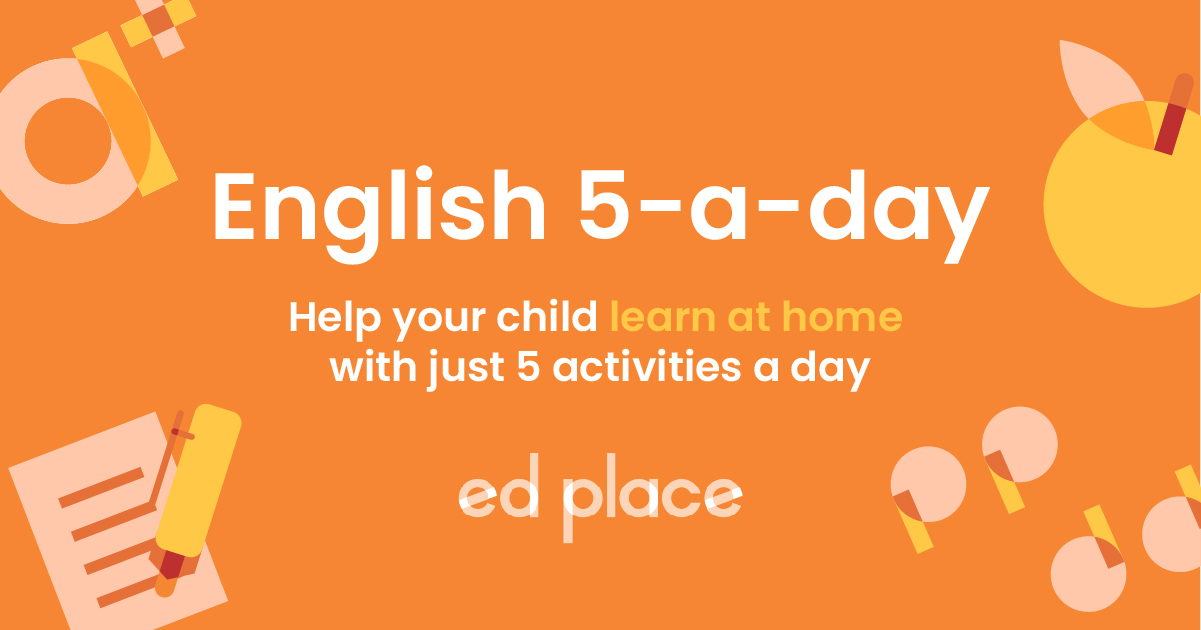
EdPlace's Year 6 Home Learning KS2 English Lesson: Homophone Hunting
Looking for short lessons to keep your child engaged and learning? Our experienced team of teachers have created English, maths and science lessons for the home, so your child can learn no matter where they are. And, as all activities are self-marked, you really can encourage your child to be an independent learner. Get them started on the lesson below and then jump into our teacher-created activities to practice what they've learnt. We've recommended five to ensure they feel secure in their knowledge - 5-a-day helps keeps the learning loss at bay (or so we think!). Are they keen to start practising straight away? Head to the bottom of the page to find the activities.
Now...onto the lesson!
Pair or Pear? By, Bye or Buy? To, Too or Two?
Homophones are words that have the same/similar sound but have a different spelling and different meaning. Usually, there are just two words with the same sound. For example, hair and hare. Sometimes, there are three words with the same sound. For example, to, too and two. Some words have very similar sounds and are easily confused or misspelt, we call these near-homophones. For example, are and our.
We’re confident that by the end of this guide your child will be able to:
1) Understand that homophones have different meanings and spellings.
2) Apply the correct spelling when using a word that is a homophone.
3) Explain the meaning of words that are homophones.
Step 1: Vocabulary Check!
1. Homophone - words have the same sound, but a different meaning and spelling. For example, main and mane.
2. Verb - verbs describe actions, states of meaning or motions, they are 'doing' words. For example, talk, jump, eat, think.
3. Noun - a person, place or thing. For example, Tom, London, a table.
4. Contraction - two words shortened and joined to make one word. For example, did not when shortened becomes didn't.
5. Homo means same.
6. Phone means sound.
Step 2: So, what does your child already know about homophones?
Children will have learned about homophones in earlier year groups and most will be using many correctly in their everyday writing. Below are some of the pairs of homophones that children will have explored in Years 3 and 4. All of these homophone pairs sound the same.
| Brake/Break | Fair/Fare | Grate/Great | Groan/Grown |
| Here/Hear | Heel/Heal/He'll | Knot/Not | Mail/Male |
| Main/Mane | Meat/Meet | Medal/Meddle | Missed/Mist |
| Peace/Piece | Plain/Plane | Medal/Meddle | Whose/Who's |
| Weather/Whether | Whose/Who's | Rain/Rein/Reign |
Ask your child if they notice the different, but similar sounds of the following pairs of words:
Accept/Except
Affect/Effect
Step 3: What's Next for Year 6?
By the end of Year 6, children need to know and be able to distinguish between more advanced homophones and other words that are often confused. Unfortunately, for most homophones, there are no particular rules that help children decide which to use or how to spell them. There are, however, a few 'Top Tips' that can help!
A. Often, the best option is to write both and decide which one looks right – seeing a word written down can really help!
Example: I want a knew/new pair/pear of trainers.
B. The following words are homophones or near-homophones. The words that end in ‘ce’ are nouns, the words ending in ‘se’ are verbs:
| 'ce' nouns | 'se' verbs |
| advice | advise |
| device | devise |
| licence | license |
| practice | practise |
Example:
I like to practise playing the piano.
I went to my doctor’s practice.
C. More homophones that are in common use, but that are often misspelt:
1) Aloud - To speak loudly. Allowed – I allowed him to go out to play.
2) Whose - Whose book is this? Who’s (who is) – Who’s this person?
3) Affect - The rain may affect our day out. Effect – I am determined to effect change.
4) There – The book is over there.
Your child can remember this by thinking about ‘place’ - ‘here’ and ‘there’
Their – The children did their work.
Your child can remember this by thinking about ‘belonging to’. Their has the word I in it - their
They’re – They’re happy.
Your child can remember this by saying the sentence aloud They’re (they are) happy. They’re is a contraction.
D. A few more homophones and their meanings:
1) Cereal - I have cereal for breakfast. Serial – I watched a serial on T.V.
2) Stationary – The car was stationary (not moving). Stationery – I bought paper from the stationery shop.
Step 4: Put Your Homophone Knowledge into Practise (Not Practice)!
It’s always a good idea to practise new skills with your child to assess their understanding. Why not have a go at the questions below together? Choose the correct word in each of these sentences. Can your child explain their choice?
1) I went to the main/mane stable to brush the horse's mane/main.
2) I practise/practice tennis when I go to tennis practise/practice.
3) You are not allowed/aloud to shout allowed/aloud in the library.
4) The knight/night rode through the village at knight/night.
5) The children had their/there/they’re playtime over their/there/they’re because their/there/they’re not allowed here.
Challenge:
Some words have the same spelling, but different meanings. They might have the same sound too! These are called homographs.
Example:
read/read - I am going to read my book. Yesterday, I read my book.
bark/bark – There is bark on the tree. I can hear a dog bark.
To challenge your child further, can they think of some more pairs of homographs and then write a paragraph using some of them? Here are a few to get them started!
watch, park, ball, bank, saw, duck, fan, hard, cool, leaves, notice, club, jam, bat.
Step 5: Activity Time!
Now we’ve had a look at homophones, why don’t you have a go at the following 5 activities with your child. I’m sure that they now have a good understanding of what homophones are and will be able to complete the activities with ease – I/eye hope you/ewe have fun!
All activities are created by teachers and automatically marked. Plus, with an EdPlace subscription, we can automatically progress your child at a level that's right for them. Sending you progress reports along the way so you can track and measure progress, together - brilliant!
Activity 1 - Investigate Homophones: Affect and Effect
Activity 2 - Understand Homophones and Other Words That Are Easily Confused
Activity 3 - Using Homophones and Homonyms
Activity 4 - Revise Homophones 2
Activity 5 - Revise Homophones 3
Answers:
1) I went to the main/mane stable to brush the horse's mane/main.
2) I practise/practice tennis when I go to tennis practise/practice.
3) You are not allowed/aloud to shout allowed/aloud in the library.
4) The knight/night rode through the village at knight/night.
5) The children had their/there/they’re playtime over their/there/they’re because their/there/they’re not allowed here.








